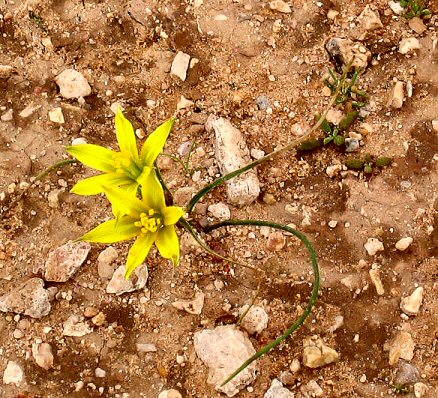From A Desert Base in Southwest Asia;
As I am neither a dog nor a shark, my sense of smell is not as highly developed as it might be for the purposes of self-preservation.
In fact, at my age the fact that any of the five senses work at all, is a testimony to modern medicine and technology.
As I write this section, I really am at "a desert base located in Southwest Asia." Here's a photo looking down a company street.
That is not snow.
The location of this base is not a secret, per se, but we have been instructed not to make a point of it so I won't other than to say it is on the edge of the war zone.
There is a significant difference between being on the edge of a war zone and being in a war zone.
For starters, while they are living in tents, the military personnel have access to a bar which serves beer and wine (limit: 3 per 24 hours per person). As I am and have always been a cheap date, three glasses of wine are enough to make me slightly sill; not silly enough to join in on the Karaoke fun the first night we were there, but slightly silly.
The problems I had with the Karaoke business was: The kids had terrible voices; they were singing songs I had never heard of; with lyrics I couldn't understand even when I was reading them on the giant projection screen.
I'm beginning to have the faintest glimmer of the slightest inkling, of the vaguest hunch that this might be a generational thing.
People on the edge of a war zone do Karaoke. People in a war zone do things like watch "Lawrence of Arabia" on a system made up of a Powerpoint slide projector connected to a computer shining the image on a white board wiped clean for the presentation.
To add to the ambiance, we dressed all dressed for the occasion. (By the way we didn't do this for the photo; that's actually the way we watched the movie.)
At this desert base they have some aircraft. Some of the aircraft have jet engines. When these particular aircraft take off they rev up their jet engines, switch on the afterburners and dart off into the night desert sky.
All of this is very appealing to write about, but when you've just arrived from a place where any noise which is very loud and very deep causes you to look for a place under which you can dive, it was somewhat unnerving.
In fact, I would say I was Flinch City except that might cause the censors to think I was using a secret code for the location of this desert base.
Here's an example of the kinds of things you find at the edges of a war zone: The world's largest shopping cart.
The circled area at the bottom indicates a person standing next to the wheel so you get a sense of the size - the senseLESS size - of this thing.
Another example: This is a photo of the mall in the city near the desert base in Southwest Asia on the edge of a war zone:
Just for comparison this is a photo of the mall next to what we call "the CASH" which is how we pronounce the acronym for the Combat Support Hospital.
But that's not what I wanted to tell you about today. This is:
At the desert base in Southwest Asia I had the opportunity to have a chat with Master Sergeant Jeff Bohn.
MSGT Bohn is an Air Force NCO who spent the first 13 years of his career as a fireman before it was discovered he had a great talent for public affairs and he was switched over to that specialty.
Jeff Bohn was aboard the first C-130 humanitarian relief flight that the US sent into Iran after the earthquake last month.
Do I have the best job in the history of jobs, or what?
Here, in my words, not his, is the story:
In the early morning hours of December 26 an earthquake measuring 6.7 on the Richter scale hit the Iranian city of BAM about 700 miles southeast of Tehran. Bam is a city of approximately 80,000 people. 30,000 are presumed to have perished in the disaster.
That's about 38 percent of the population - a nearly unimaginable scale.
As a percentage of population that would be like nearly TWO MILLION people dying in one day here in Baghdad.
The Shah of Iran was deposed, coincidentally to this report, on January 16, 19xx. After that we had the hostage crisis which, in additional to a crappy economy, probably cost Jimmy Carter a second term; and the rescue of the Electronic Data Systems (EDS) employees by the then-owner of the company, Ross Perot which has been recounted in books, plays, musicals and mini-series.
Through it all, the Iranian government has said the most horrible things about the United States; has fostered and supported terrorism against the West generally and the US in particular; has been an actively de-stabilizing force throughout the region; has exported - or attempted to export - its particular brand of violent Islamic fundamentalism to places as far-flung as Indonesia; conducted a ten-year war with Iraq (during which most Americans were unsure for whom to root and the answer, as it turned out was: Neither); and has generally not played nicely with others.
In the face of all this recent history, a devastating earthquake struck. 30,000 people were killed.
Who raced in to help?
People like Master Sergeant Jeff Bohn and his colleagues from the United States Air Force - actually from the Illinois Air National Guard - aboard a cold, noisy C-130 carrying with them 20 TONS of relief supplies launched from A Desert Base in Southwest Asia.
Jeff said they had no idea whether they would be permitted to fly in unescorted; whether Iranian Air Force jets would escort them; or whether they would be forced to turn back.
They had no idea, once they reached their destination (Kerman, Iran - about 100 miles from Bam) whether they would be permitted to land; and if they were permitted to land if they would be permitted to unload their cargo; and if they were permitted to unload their cargo, whether they would permitted to leave.
There were several women in the crew including the loadmaster and the combat camera photographer. They didn't know if the women would be allowed to get off the plane if they were allowed to approach, land, and unload their cargo.
"There was about six hours of pucker factor," Bohn told me. "But we had a mission and we were going to go as far as we were permitted to go; hopefully all the way into Iran."
Once they got to Kerman, they were, indeed, permitted to land, taxi, and park. A linguist had been placed on the plane and got off to negotiate with the Iranians.
At first they refused to allow the women to leave the plane. After some back-and-forth, it was decided that if the women covered their heads they would be allowed off. At first they pulled the hoods of their Air Force parkas over their heads and pulled the strings tightly. After a while they donned wool watch caps pulled over their hair and ears.
Jeff Bohn told me that a squad of what appeared to him to be Iranian Army recruits were standing in formation. They would be ordered to drop to one knee; then stand at attention; then back to one knee; then back up.
Finally, they were ordered to march toward the C-130 where they helped unload the plane.
By hand.
In the event here is the photo of Iraqi soldiers working side-by-side with a female American Airman (with woolen cap in place) to offload the 20 tons of relief supplies.
By hand.
A small group of Americans, not knowing whether they were going to be successful; not even knowing if they were going to be safe did what Americans always do when they see a need - they roll up their sleeves and help.
Here's Master Sergeant Jeff Bohn with his football named: Wilson.
Wilson went to Iran, too.
Jeff Bohn, Wilson, and the concept of helping innocent people who happen to live in a country controlled by your enemy, are uniquely American products.
I told you that story to contrast it with these:
This past weekend I led a group to investigate a mass grave deep in the southern part of Iraq. This portion of Iraq is very desolate; very isolated; very much in the war zone.
It is believed this mass grave contains the remains of more than 1,000 Kurds who were part of nearly 200,000 who were systematically murdered by Saddam Hussein in the late 1980s.
The team included videographers, still photographers, a forensic archeologist, the senior human rights attorney here, a woman who will be training Iraqis in proper exhumation methods, two helicopter crews, a group of soldiers with guns, and me.
Here, our forensic archeologist is explaining how it appears Saddam's henchmen went in with a backhoe, dug a pit maybe three meters wide by 10 meters long with a dirt ramp at one end so that a truck could back down the ramp and dump, perhaps, 100 bodies into the ditch, pull out and the pit would be backfilled.
At this particular site it appears there might be evidence of as many as 11 such trenches.
The lawyers and the archeologists, and the exhumation experts and everyone else will be called upon to clean up the horrors of what some human visited upon other humans.
I was going to write about this gravesite in greater detail - and perhaps we'll revisit the matter down the road - but a blast shook the Green Zone at just about 8 this morning.
It was loud enough for everyone to recognize it was a serious explosion, but didn't carry with it the concussion which would indicate it was terribly close.
In the event, it was at what is known as the North Gate; about a mile away from the Palace in which I work.
It was a car bomb which is known in military parlance as a Vehicle Borne Improvised Explosive Device - VBIED.
My first instinct was to grab my flak jacket and my camera and go looking for it; but wiser heads prevailed, so I waited about 20 minutes, THEN went out and looked for it.
The scene is too grisly to recount even in words, much less in the pictures I took to add to the record the Combat Camera crews were building for investigative and intelligence purposes.
Suffice it to say that the blast was so powerful the vehicle which carried it was completely vaporized. It literally blew the razors off the razor wire which was nearby. It knocked over concrete flower pots - perhaps two cubic meters - 200 meters away.
Here is a photo of the crater it left:
The engine of the vehicle was found blown through the rear window of another destroyed vehicle about 50 meters to the left of this photo.
As I was walking away from the scene, I thought about having visited two mass grave sites in as many days. One was 20 years old; one twenty minutes old.
Just as I had been with the specialists who would be responsible for caring for the remains far out in the desert; I passed the specialists who would be responsible for caring for the remains just a few feet from where I stood.
Here, again, these experts were preparing to clean up the horrors of what some human had visited upon other humans very much in the war zone.
The danger, on mornings, like this, is that you become discouraged. Maybe this won't work. Maybe the bad guys will win.
Then, you look through the photos you've taken over the past 24 hours and come across one taken at the mass grave site which helps you focus on a C-130 flight from a desert base; on people riding on helicopters to help bring closure to mass murders; on the people who work next to you every day.
In the middle of a desert. All will be well.
Be safe.
Note: The Iraq Travelogue emails are distributed through the services of Focus Data Solutions, Inc.
Click here to return to the Mullings page
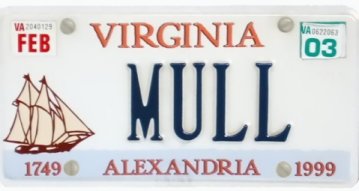


Chapter 11: Near a War Zone; In a War Zone
Sunday, January 18, 2004
A Mass Grave Site in Southern Iraq
& from Baghdad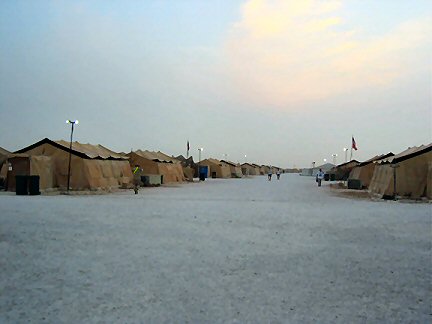
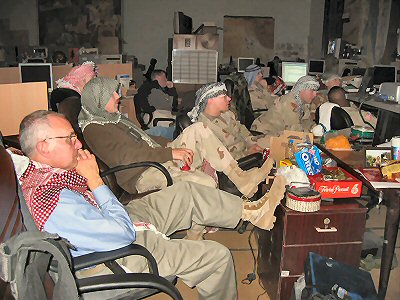
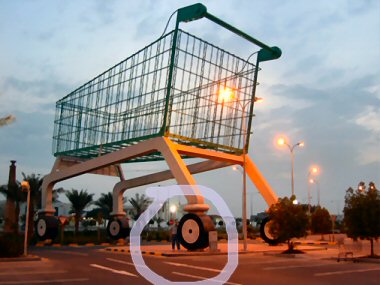

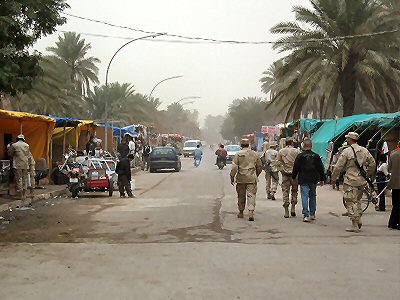
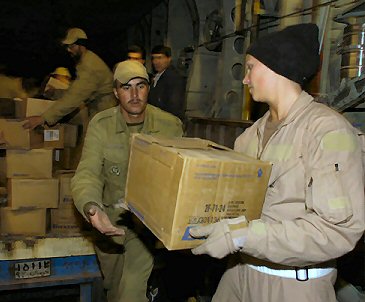
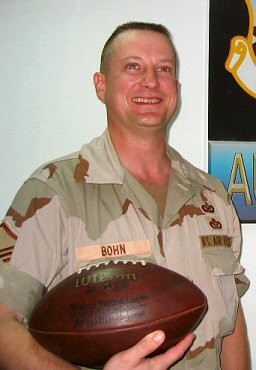
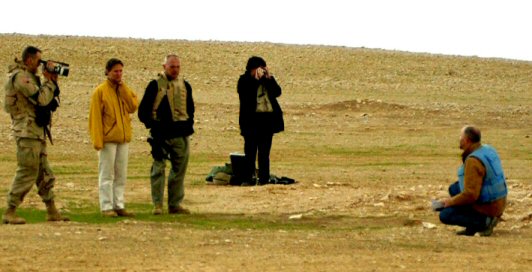

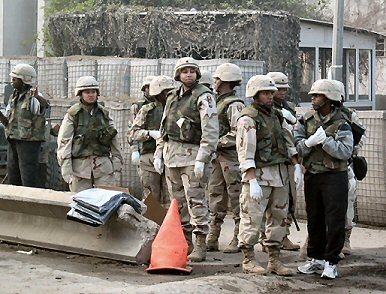
In the middle of a mass grave site.
In the middle of absolutely nowhere.
Even in the middle of a war zone;
Life blooms.
